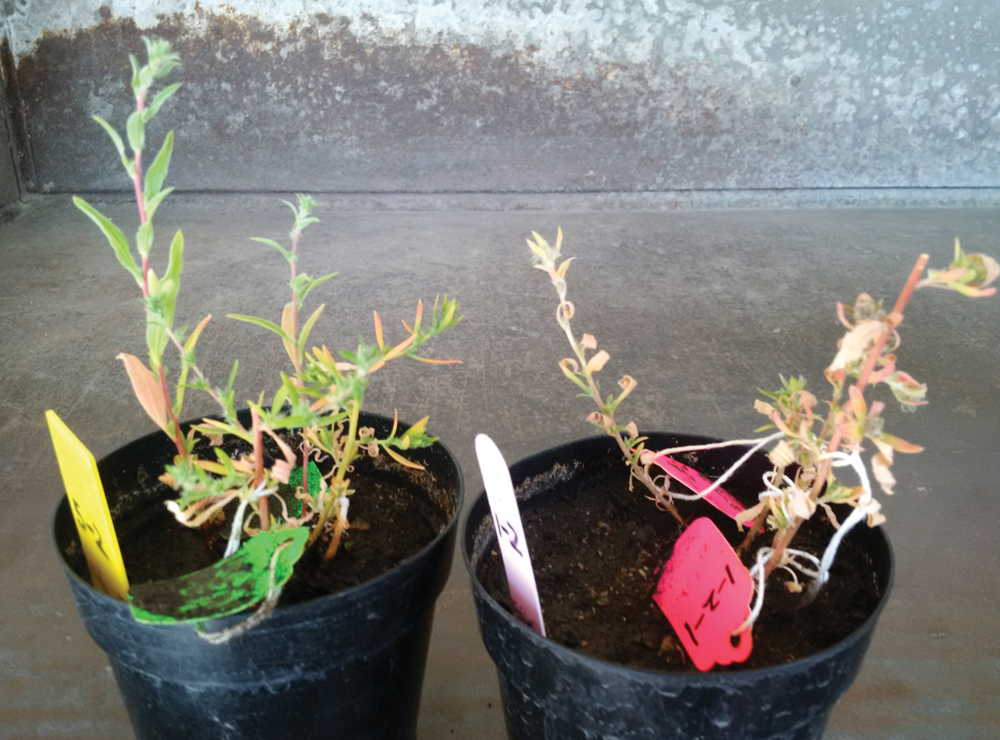Every season more farmers face the challenge of herbicide-resistant weeds.
“Herbicide resistance is the genetic capacity of a weed population to survive a herbicide treatment that, under normal use conditions, would effectively control that weed population,” said Dr. Jeanette Gaultier, weed specialist with Manitoba Agriculture.
It’s sometimes described as evolution happening at an accelerated pace and an illustration of the “survival of the fittest” principle.
- Read more: Use diversity to fight resistant weeds
- Read more: Costs of disease and weed resistance
Read Also

Claas brings 1000 Series SP forage harvesters to Canada
In mid-August, Claas unveiled its new line of Jaguar forage harvesters at an event in Visalia, California, deep in the heart of that state’s dairy region.
While resistance and tolerance are often lumped together, that genetic element is a key difference. “Resistance involves a genetic change that can be passed down or that uniquely occurs in a population, whereas tolerance is usually inherent to a particular weed species,” said Gaultier.
Resistance is largely a numbers game. “It’s based on chance in that a mutation occurs in a certain plant that allows it to survive the herbicide application. By applying that herbicide you are in fact selecting for resistance.”
People often think herbicides cause resistance. In reality, Gaultier said these mutations occur “sporadically and naturally.”
“The problem then multiplies as all susceptible plants die and stop setting seed, while the tolerant plant continues to do so; if you keep using that herbicide you will continue selecting for that resistance.”
Annual species — such as wild oat, green foxtail, cleavers, kochia, hemp-nettle, smartweeds, ragweeds and wild mustard — are at higher risk than perennials of developing resistance as they have greater genetic diversity. As well, it is more common in certain species like kochia that tend to have a lot of mutations.
“Two of the biggest offenders out west are wild oat and green foxtail. Over the years, their populations have been increasing to the point where resistance to wild oats in Manitoba is now the norm rather than the exception.”
Currently producers run a 60 per cent chance of having resistant wild oat species and they’re seeing a lot more weed species showing resistance to Group 2 herbicides.
“Ninety-nine per cent of kochia is resistant to Group 2. On the Prairies, we’re seeing a sharp increase in glyphosate resistant kochia as well, and with widespread glyphosate use we could see more weeds gaining resistance to it.”
Getting testy
While practices such as rotating herbicides between groups and using them only when necessary can reduce the chance of resistance, the unpredictable nature of genetics means your best chance is spotting resistance early and testing for it.
“You’re most likely to notice it two to three weeks into your herbicide application once the problem is large enough to give you a patch of weeds that hasn’t been controlled. Producers should look for patches that don’t have a pattern or geometric shape.”
Once you suspect resistance, testing can confirm or allay your fears. If it’s the former, at least you know what you’re dealing with.
“Usually you can expect to get results over the winter so you can put a plan in place for the next growing season.”
Testing costs depend vary by species and the number of herbicides tested. Gaultier believes the information is worth the price.
As for the cost of herbicide resistance to the industry as a whole, that’s hard to pinpoint.
“One study from the U.S. put the cost in the billions of dollars. For farmers though, it’s more about the inconvenience of having to change their management practices; that can be as big a deal to them as the money.”
Depending on the herbicide involved, a producer may need to rely more on tillage or change up their crops more frequently.
Perhaps the only certainty for farmers is that the issue of herbicide resistance won’t be weeded out anytime soon.
















